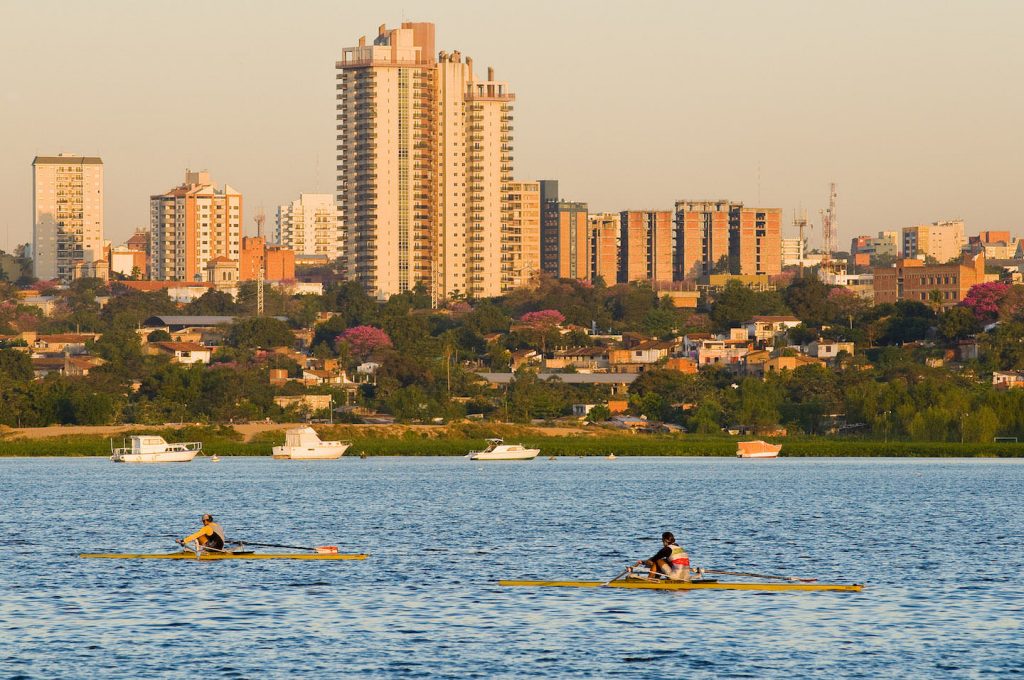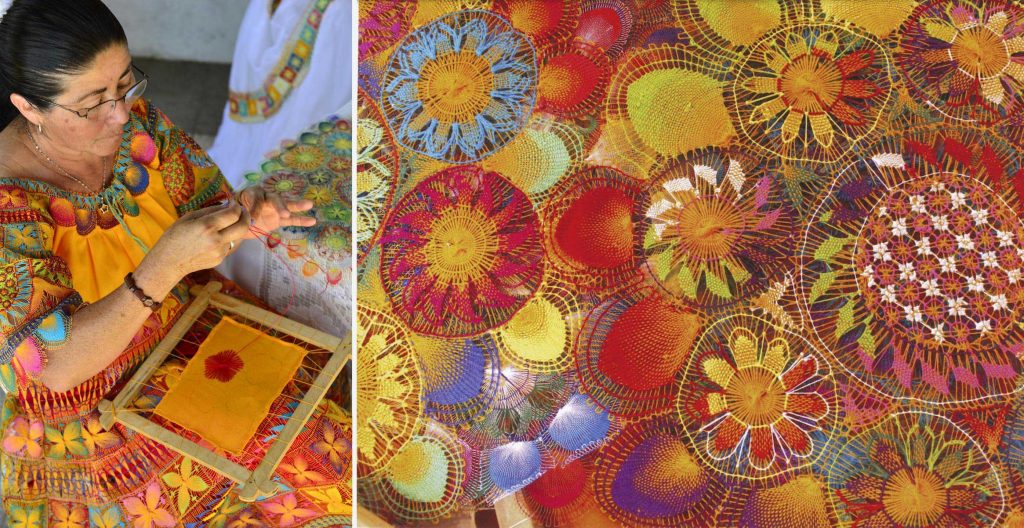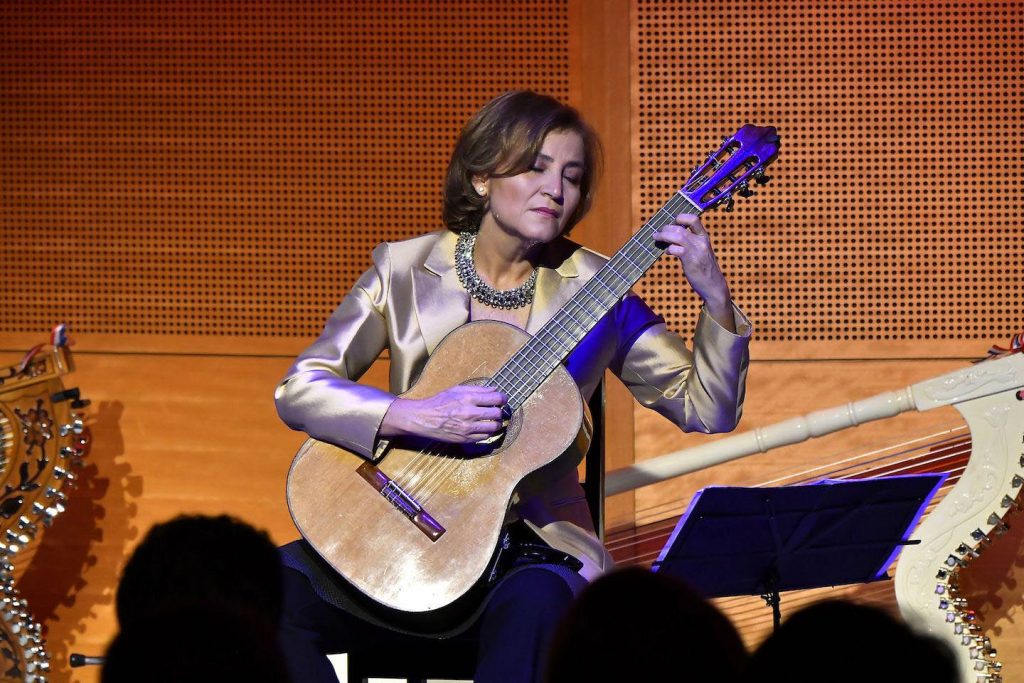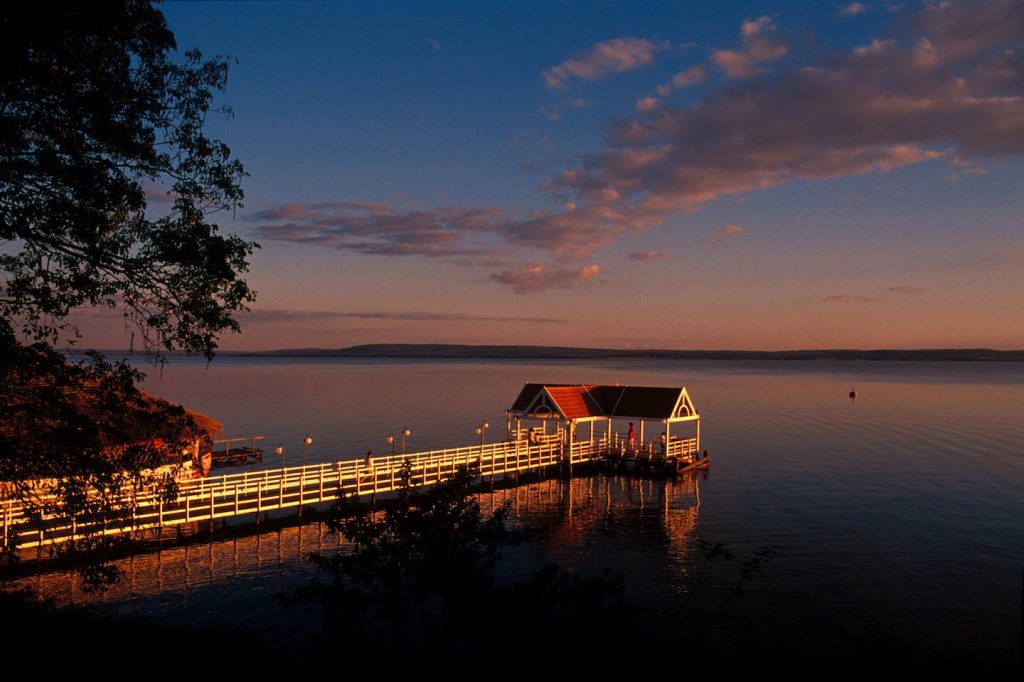
Welcome back to Min-On’s Music Journey! Today the Min-On Concert Association and the Embassy of the Republic of Paraguay in Japan guide you to Paraguay, a country in the center of South America.
Paraguay is a landlocked country bordered by Argentina, Brazil and Bolivia. It is made up of 17 departments (provinces) and the capital of Asunción. The Paraguay River, Paraná River and many others flow through the country, blessing it with a rich natural environment.
In addition to Spanish, Paraguay has an indigenous language called Guarani that is still in use after many centuries. Paraguayan people have used Guarani to write countless verses filled with emotion in local music and literature.
Asunción, the Mother of Cities
The capital of Asunción is a port city on the east bank of the Paraguay River in southern Paraguay. In the early 15th century, the Spanish landed here after crossing the Paraguay River and a founded a city that became the center their South American colonization, leading to the nickname “Mother of Cities.”
In the past, Paraguay had a network of railroads connecting major cities, both domestic and foreign. Paraguay wasn’t able to mine or easily import the coal required for a railway system, and built wood-powered trains instead, which were rare at the time. With the rise of automobiles, all of Paraguay’s domestic railroad lines have fallen out of service, and Asunción Central Station now serves as a railroad museum, giving visitors a glimpse into this part of Paraguay’s history.
The center of Asunción is the historic district known as the Centro. The area near the Plaza of Heroes, home to the National Pantheon of Heroes with its distinctive white dome, is always bustling with locals. The remains of heroes who died in the War of the Triple Alliance (1864–70) are enshrined in the Pantheon, and the entrance is always guarded. The daily ceremonial changing of the guard is an impressive sight that attracts many onlookers. In Asunción, beautiful sunsets over the Paraguay River never fail to impress visitors.

The Paraguay River and the city of Asunción

National Pantheon of Heroes (left) and a train at the railroad history museum (right)
Paraguay’s southernmost city, Encarnación
Encarnación, located in the southernmost part of Paraguay, has been developing very rapidly in recent years. It has become a top domestic tourist location, including new waterfront boardwalks and artificial beaches. The city has also welcomed Japanese immigrants since the 1930s, allowing Japanese businesses to flourish in the area, and many families of Japanese Paraguayans call the city home.
Every summer, Encarnación holds Paraguay’s biggest carnival, which draws massive crowds of domestic and foreign spectators who go wild spraying each other with canned foam. On the stage, performers in dazzling costumes dance to vibrant music that reverberates throughout the city, filling the crowd with a sense of emancipation from daily life.

Carnival in Encarnación
In the 1600s, the Jesuits established many missions throughout the country to help spread Christianity to the native people. Schools, workshops, houses, cemeteries and vegetable gardens can be seen at the ruins of La Santísima Trinidad de Paraná and Jesús de Tavarangue, two missions found 30 kilometers from Encarnación. These ruins give a glimpse into the history of that era, and were registered as Paraguay’s sole World Cultural Heritage Site in 1993.

Ruins of Jesús de Tavarangue

Ruins of La Santísima Trinidad de Paraná
Rich natural landscapes and diverse ecosystems
Paraguay is rich in natural beauty. The country puts considerable effort into environmental conservation to protect the ecosystems of native flora and fauna. The country is divided by the Paraguay River, which flows from north to south, into a western region (called “Chaco”) and an eastern region, each with unique natural characteristics. The Chaco region has a population of just 200,000 people and includes Defensores del Chaco National Park, the largest national park in the country, and the Pantanal Conservation Area (Pantanal wetland) that was registered as a World Natural Heritage site in 2000. The Pantanal is the world’s largest low-lying tropical wetland, extending into neighboring Brazil and Bolivia, and it is roughly the same size as Japan’s main island of Honshu. During the rainy season, most of the land is flooded by the overflowing rivers, but as the dry season approaches, the water recedes, changing the landscape into a grassland. This is a unique wildlife habitat unlike any other worldwide, and many different species of animals can be found here, including jaguars, Paraguayan caimans (crocodiles), otters, capybaras, tapirs, giant anteaters and storks.


Animals of Paraguay
Monday Falls, one of Paraguay’s most famous waterfalls, has a 40-meter drop and contains three large waterfalls and many smaller ones. The sight of the river sweeping in full force over the edge of the cliff is breathtaking.
The Itaipu Dam is a hydroelectric dam that supplies nearly all of Paraguay’s electricity. This enormous structure is eight kilometers long and has 21 generators, boasting the second largest power generation capacity of any dam in the world. Tours of the inside of the dam and special events that illuminate its façade are also held, allowing visitors to enjoy this iconic Paraguayan landmark.

Monday Falls

Itaipu Dam
Fusion of indigenous and Spanish cultures
Ñandutí, which means “spiderweb” in the Guarani language, is a type of lace embroidery that is a local specialty of Itauguá City. Although it’s an iconic Paraguayan handicraft, its origins are not clear—it may have originated from the lace weaving of Tenerife, Spain.
Many early examples of ñandutí were woven with white thread, and they were mainly used to decorate church altars and for rituals. As time passed, ñandutí transformed and started to employ brightly colored designs. It is now used to decorate many everyday items, including clothing, accessories, tablecloths and curtains.

A woman sewing ñandutí (left) and an example of its brightly colored patterns (right)
Paraguay’s cuisine uses large quantities of ingredients including corn, cassava (yuca) and peanuts. European traditions were incorporated into native Paraguayans’ everyday lives to create a unique culinary culture. One example is “chipa,” a cheese bread made from kneaded, baked cornmeal. It’s common for Paraguayans to have a meat-heavy diet. “Asado” means “grilled meat” in Spanish, and refers to grilled or barbecued meat, including beef and sausage, that is the national dish of Paraguay. Visitors can also enjoy the unique dishes of vori vori, a soup with dumplings made of cornmeal and cheese. Paraguayan people often carry around a canteen of tereré, a kind of cool herbal tea, which could supplement the lack of vegetables and vitamins in their meat-centric diet.

Chipa (left) and vori vori (right)
The Paraguayan harp, a plucked string instrument, is essential to Paraguayan music. It’s thought that the Paraguayan harp developed from the European harp after it was brought to Paraguay in the 17th century, and it remains most popular here amongst all Latin American countries. It’s considered the national instrument of the country, and features different manufacturing techniques and a vast number of players and songs.

Paraguayan harp event held in Japan (May 3, 2019)
Min-On has invited Paraguayan artists to perform in Japan four times to date (1976, 1989, 2003 and 2019).
First, please enjoy these two songs from the 2003 performance of Martín Portillo & Americanta.

Martín Portillo & Americanta
Born in 1970 in Paraguay’s capital of Asunción, Martín Portillo started studying music theory and guitar at music school when he was seven years old. At the age of 15, he was certified as a senior music teacher, and at the age of 17, he embarked on his first tour. In 1999, he performed in Japan for the first time as part of a world tour.
Playlist
- Tren Lechero
This song depicts a train loaded with milk on its way from the farms to the city.
- Danza de las Botellas
This number features female dancers in charming, pretty traditional dresses performing impressive dance maneuvers.
Next, we would like to feature a song from the Berta Rojas concert, which was co-hosted with the Embassy of the Republic of Paraguay, followed by a joint performance of Berta Rojas with the Landfill Harmonic Orchestra, who have made headlines with their recycled instruments made from garbage.

Berta Rojas
One of today’s foremost classical guitarists, Berta Rojas has been praised as “the Ambassador of the classical guitar” by publications like the Washington Post and Classical Guitar Magazine. She has performed in places like Carnegie Hall and the Kennedy Center in Washington, D.C., as well as with the RTÉ National Symphony Orchestra and the Brussels Philharmonic Orchestra. Her musicianship and warm personality have gained her the affection of fans across the globe.
Playlist
- Danza Paraguaya (Paraguayan Dance)
This piece was composed by Agustín Barrios Mangoré, a Paraguayan musician who is world-renowned in the realm of classical guitar.
In closing, we would like to introduce Arpa Duo Sonrisa and Chiara D’Odorico, two groups recommended by the Embassy of the Republic of Paraguay in Japan.

Arpa Duo Sonrisa
This harp duo includes Enrique Carrera, a harpist born in Asunción, Paraguay, and Arisa Matsuki, a Japanese harpist. In Paraguay’s capital of Asunción in 2008, they were invited represent Asia and perform at the second annual World Harp Festival, garnering rave reviews. They have also performed for the President of Paraguay when he visited Japan, and for parties in Japan hosted by ambassadors of different countries. We hope you enjoy their performances below, which have become a valuable bridge of cultural activity for both Japan and Paraguay.
Playlist
- Cascada (Waterfall)
- Añorandote en la Distancia (Thinking of You from Afar)

Chiara D’Odorico
One of the most famous Paraguayan pianists from the city of Asunción, Chiara D’Odorico is an active musician who performs regularly overseas, both solo and with an orchestra. She has been selected as an Honorary Tourism Goodwill Ambassador of Paraguay and as an Outstanding Youth of Paraguay, as well as been given the “Artificers of Change Award, Women who Innovate and Create.” Further, she was given the National Youth Award and the Respect for Contemporary Paraguayan Women Award from the President of Paraguay.
- “Tres piezas para piano”
“Tristezas de la soledad”, “Reminiscencias”, “Página de álbum”

Did you enjoy your music journey to Paraguay? There are still many more places to go on our music journey. Please look forward to our next destination.
Min-On Concert Association
-Music Binds Our Hearts-
Produced in collaboration with the Embassy of the Republic of Paraguay in Japan.





